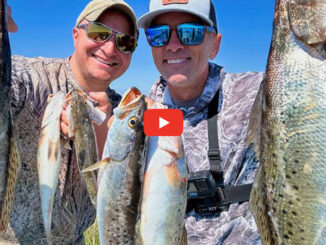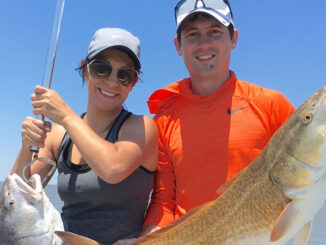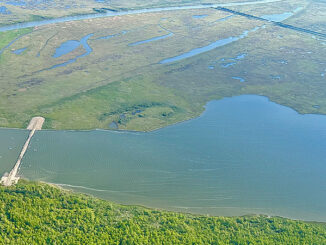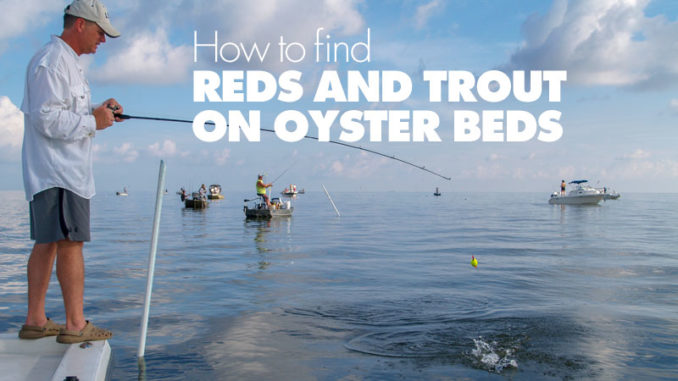
Rockefeller, po boy, half shell — it doesn’t matter how you like your oysters, you’ll love their fish-friendly appeal.
Indeed, with abundant forage, breaks and ambush potential, shell reefs peppering the coastal shallows present prime fishing opportunities.
Here are some thoughts on how to make the most of these fish factories.
Where to go
Capt. Ross Montet of Cajun Fishing Adventures in Buras said you’ll find a broader distribution of oyster reefs on the west side of the Mississippi River, but don’t overlook any marked areas to the east.
Oysters need a mix of salt and freshwater, so noting where passes and diversions allow consistent brackish mingling will guide you to the better areas.
For visual reference, look for PVC pipe or willow branches marking these private or state-owned sites.
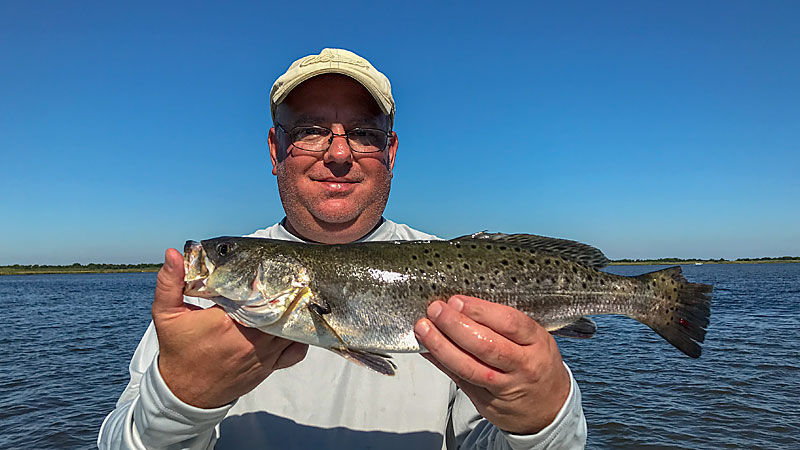
Who sits where?
It’s not quite as rigid as a formal dinner, but various oyster reef regulars definitely have preferred seating.
Redfish and trout typically patrol above and around the reefs in search of tide-born shrimp and baitfish.
Sheepshead and black drum like to nibble on crustaceans and invertebrates hiding amid the shells, while the drum also crunch some of the smaller oysters.
Flounder aren’t considered a target species around oyster reefs, but you might encounter flatfish along the soft perimeters, where shells don’t scrape their bellies.
Depth diversity
Montet said trout spawn over shallow oysters in 1 to 2 feet of water in May and June.
After that, it’s all about temperature and comfort for these delicate fish, as well as their neighboring species.
As the year warms, trout reposition over progressively deeper reefs to find cooler water. Each day’s sun influences certain shallow opportunities.
“You might catch them on the shallow reefs in summer, but it’s going to be a first-light thing,” Montet said. “When the sun comes up, they get deeper.”
Signs of life
Capt. Anthony Randazzo of Venice-based Paradise Plus Guide Service dials in his oyster reef attack by scanning for indications of activity.
Fish pushing, boils/busts and reds or drum tailing on a reef all point to promising spots.
Most exciting, though, is a flock of birds hovering near the water, screeching and dipping toward the surface. Gulls are quick to pick off shrimp and baitfish driven topside by feeding predators.
Spotting such gatherings usually means trout and/or redfish on the feed.
Just don’t fall for the wiles of liar birds, or you’ll be spinning your wheels.
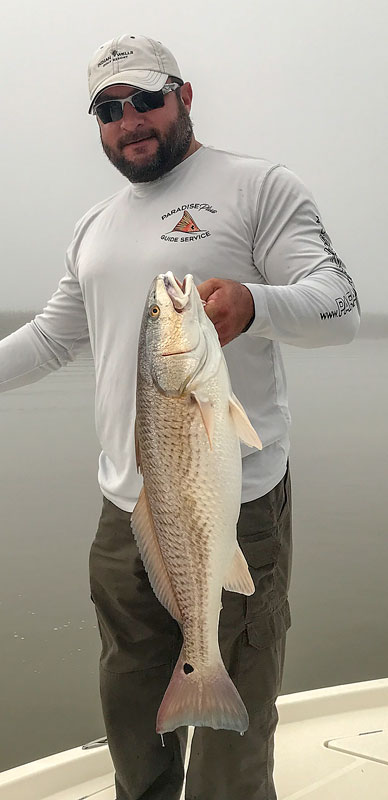
Wind and water
Montet uses the wind for his initial approach until he determines current direction.
Moving baits worked with the current yield the most-natural and convincing presentation.
He’ll keep a light to moderate breeze at his back for a steady, silent drift. But if the wind pushes him too fast for efficient presentations, he’ll head into it and use his trolling motor to balance the blow and hold his boat on the spot.
Once he determines a productive area, Montet drops his Power Poles and work his baits with the current.
Best baits
For trout, redfish, drum and the occasional sheepshead, you simply can’t go wrong with a live shrimp with a split shot under a cork.
Just set the float to hold your bait about a foot over the reef or off to the side of a shallow spot, and present the bait with the current.
Artificial shrimp like those from Vudu, D.O.A. and Unfair Lures offer cost- and time-effective options, mostly for trout and reds.
Light jigs (1/8- to ¼-ounce) with cocahoe minnows like Matrix Shad, curlytails or soft-plastic swimbaits get plenty of attention from trout and reds, but keep them moving to avoid shell snags.
For extra appeal — particularly with drum and sheepshead — use scented soft plastics like Gulp or added scent gels, pastes or sprays to standard plastics.
Bumping any of these jig packages along the silty perimeter might yield a flounder bite.
Topwaters often provoke incredibly violent strikes. Low-light conditions are best for trout, but fired-up reds will bust mullet imitators round the clock.
